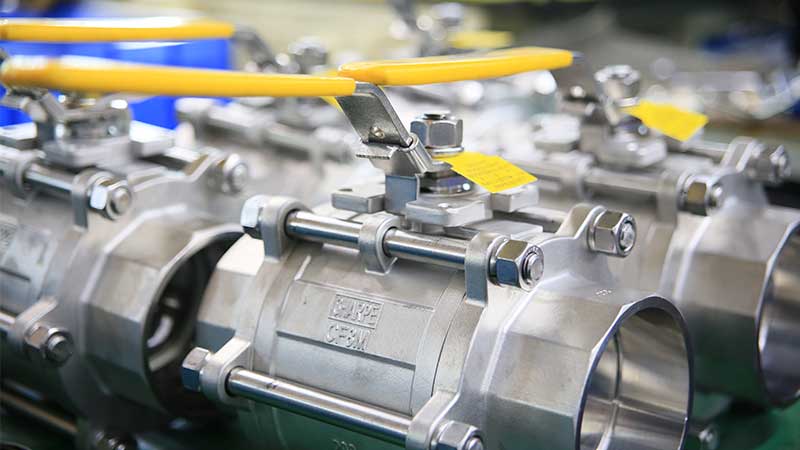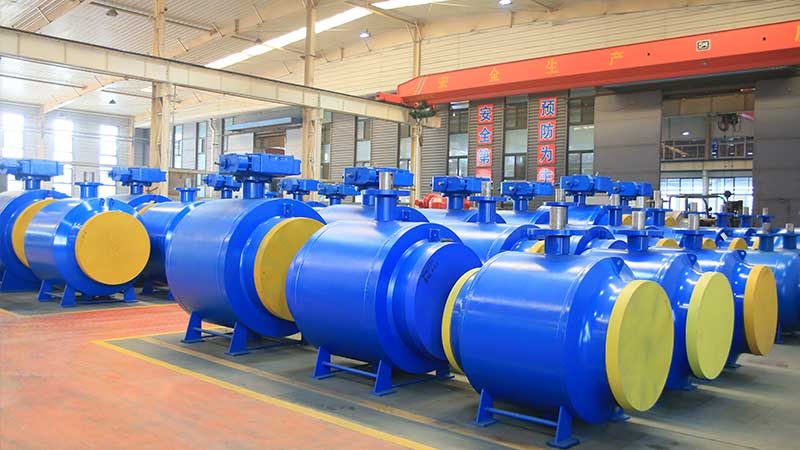What is the valve?
The valve is the control element of the fluid delivery system. The valve is the total of the mechanical product with the movable mechanism,used to control the medium in the pipe.
5 basic functions of the valve
- Turn on or off the circulation of the pipeline medium
- Change the flow direction and flow of the medium
- Prevent backflow
- Adjust the pressure of the medium, release excess pressure and discharge steam
- Protect the normal operation of pipelines and equipment
How well the valve function is implemented largely determines the performance of the system.

Valve classification
There are many classification methods for valves. The classification methods are different and the results are different. The commonly used classification methods are as follows.
#1 Classification by purpose and role
Valves can be divided into shut-off valves, check valves, diverter valves, regulating valves, safety valves, other special valves and multi-purpose valves according to their use and function.
shut-off valves
Mainly used to cut off or turn on the media in the pipeline. Such as gate valves, globe valves, ball valves, plug valves, butterfly valves, etc.
check valves
Used to prevent media from flowing backwards. Such as check valves, etc.
diverter valves
It is used to change the flow direction of the medium in the pipeline and to distribute, divert or mix the medium. Such as three-way or four-way plug valve, three-way or four-way ball valve, distribution valve, etc
regulating valves
Mainly used to regulate the flow and pressure of the medium. Such as regulating valves, pressure reducing valves, throttle valves, balancing valves, etc.
safety valves
It is used for overpressure safety protection and discharges excess medium to prevent the pressure from exceeding the rated safety value. When the pressure returns to normal, the valve closes again to prevent the medium from continuing to flow out. Such as various safety valves, relief valves, etc.
other special valves
Such as steam traps, vent valves, slag discharge valves, drain valves, pigging valves, etc.
multi-purpose valves
Such as stop check valves, check ball valves, stop check safety valves, etc.

#2 Classification by power source
The valve can be divided into a drive valve and an automatic valve according to the driving mode, and the drive valve can be further divided into a manual valve and a power driven valve.
automatic valve
A valve that acts on its own depending on the capabilities of the medium (liquid, air, steam, etc.). Such as safety valves, check valves, pressure reducing valves, steam traps, emergency shut-off valves, etc.
drive valve
A valve operated by manual, electric, pneumatic or hydraulic forces. Such as gate valves, globe valves, ball valves, butterfly valves, diaphragm valves, etc.
A manual valve is a valve operated by a human hand by means of a hand wheel, a handle, a lever or a sprocket. Manual valves are the most common type of valve actuation. Generally, the driving force on the manual valve handwheel must not exceed 360N. When the valve opening and closing torque is large, a gear or worm gear reducer can be provided between the hand wheel and the valve stem to operate
Power-driven valves are valves that are driven by various power sources. Power-driven valves commonly found in the industrial field include electric valves, pneumatic valves, hydraulic valves, gas-liquid linkage valves and electro-hydraulic linkage valves.
#3 Classification by main technical parameters
1. Classified by nominal size
Valves can be divided into small diameter valves, medium diameter valves, large diameter valves and extra large diameter valves according to their nominal sizes.
Small diameter valve: Nominal size ≤ DN40 valve
Medium diameter valve: DN50 ≤ nominal size ≤ DN300 valve
Large diameter valve: DN350 ≤ nominal size ≤ DN1200 valve
Extra large diameter valve: Nominal size ≥ DN1400 valve
2. Classified by nominal pressure
Valves can be divided into vacuum valves, low pressure valves, medium pressure valves, high pressure valves and ultra high pressure valves according to the nominal pressure.
Low vacuum valve – 105~102Pa
Medium vacuum valve – 102~10-1Pa
High vacuum valve – 10-1~10-5Pa
Ultra High Vacuum Valve – 10-5Pa
Low pressure valve – valve with nominal pressure ≤ PN16
Medium pressure valve – PN16 ≤ nominal pressure ≤ PN100 valve
High pressure valve – PN100 ≤ nominal pressure ≤ PN1000 valve
Ultra high pressure valve – nominal pressure > PN1000 valve
#4 Classified by media limit operating temperature
The valve can be divided into high temperature valve, medium temperature valve, normal temperature valve, low temperature valve and ultra low temperature valve according to working temperature.
High temperature valve: valve with t>425°C
Medium temperature valve: 120 ° C ≤ t ≤ 425 ° C valve.
Normal temperature valve: 29 ° C < t ° 120 ° C valve
low temperature valve: -100 ° C ≤ t ≤ -29 ° C valve
Ultra-low temperature valve: <- 100 ° C valve
#5 Classification by shell material
Valves can be divided into non-metallic valves, metal valves and metal-lined valves according to the housing material.
Non-metallic valves: such as ceramic valves, glass steel valves, plastic valves, etc.
Metal valves: such as cast steel valves, cast iron valves, alloy valves, etc.
Metal lining valves: such as lead-lined valves, plastic-lined valves, rubber-lined valves, lining-bearing porcelain valves, etc.
#6 Classification by connection with pipes
The valve can be divided into threaded connection valve, flange connection valve, welded connection valve, clamp connection valve, card screen connection valve and ferrule connection valve according to the connection mode with the pipeline.
Threaded connection valve: a valve with internal or external threads on the valve body and threaded connection to the pipe
Flange-connected valve: a flange with a flange on the valve body and a flanged connection to the pipe
Welded connection valve: a valve with a butt weld or socket on the valve body and a welded connection to the pipe
Connecting the valve to the clamp: the valve body cannot be blue or has a single flange, and the valve is connected with the pipe.
Card screen connection valve: a valve with a jaw on the valve body and a pipe screen connected to the pipe
Casing connection valve: a valve connected to the pipe by a ferrule
#7 Classification by structural characteristics
According to the structural features, the valve can be divided into a truncated door shape, a gate shape, a cock and a spherical shape, a rotary shape, a sliding valve shape and a butterfly shape.
Truncated – the closure moves along the centerline of the seat
Gate shape – the closing member moves in a direction perpendicular to the centerline of the seat
cock and ball – the closing piece is a plunger, taper or sphere that rotates around its own axis
Swing shape – the closing member rotates around the axis outside the seat
Sliding valve shape – the closing member slides in the direction perpendicular to the channel
Butterfly – the disc of the closing piece rotates around the axis in the seat (neutral) or rotates around the axis outside the seat (eccentric)
The above is the valve classification method of the system. With the continuous improvement of the process flow and performance of various complete sets of equipment, the types of valves are also constantly changing.
